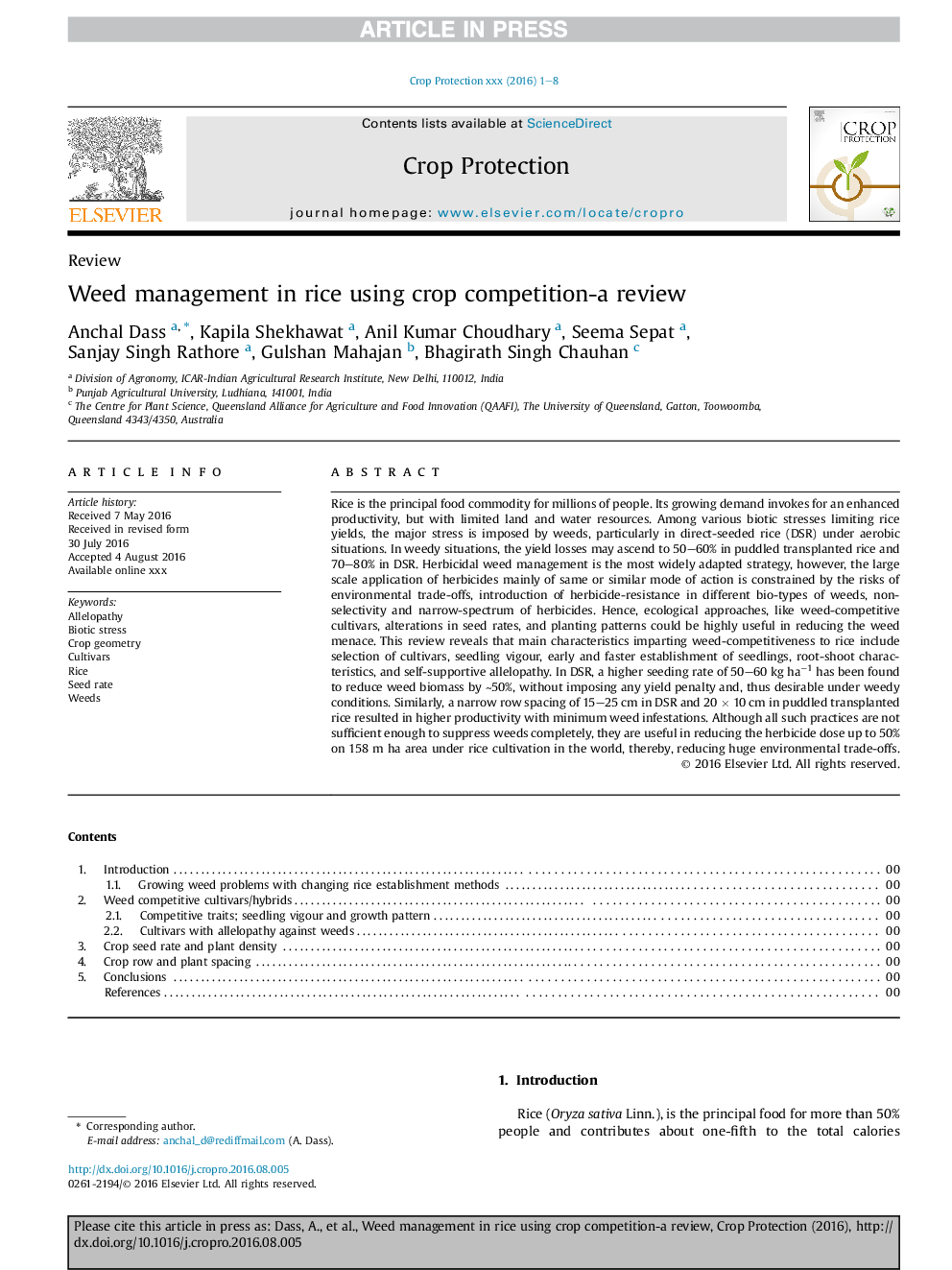| کد مقاله | کد نشریه | سال انتشار | مقاله انگلیسی | نسخه تمام متن |
|---|---|---|---|---|
| 5760841 | 1624292 | 2017 | 8 صفحه PDF | دانلود رایگان |
عنوان انگلیسی مقاله ISI
Weed management in rice using crop competition-a review
ترجمه فارسی عنوان
مدیریت علفهای هرز در برنج با استفاده از رقابت محصول - یک بررسی
دانلود مقاله + سفارش ترجمه
دانلود مقاله ISI انگلیسی
رایگان برای ایرانیان
کلمات کلیدی
آللوپاتی، استرس زیستی، هندسه محصول ارقام برنج، نرخ بذر، علف های هرز
موضوعات مرتبط
علوم زیستی و بیوفناوری
علوم کشاورزی و بیولوژیک
علوم زراعت و اصلاح نباتات
چکیده انگلیسی
Rice is the principal food commodity for millions of people. Its growing demand invokes for an enhanced productivity, but with limited land and water resources. Among various biotic stresses limiting rice yields, the major stress is imposed by weeds, particularly in direct-seeded rice (DSR) under aerobic situations. In weedy situations, the yield losses may ascend to 50-60% in puddled transplanted rice and 70-80% in DSR. Herbicidal weed management is the most widely adapted strategy, however, the large scale application of herbicides mainly of same or similar mode of action is constrained by the risks of environmental trade-offs, introduction of herbicide-resistance in different bio-types of weeds, non-selectivity and narrow-spectrum of herbicides. Hence, ecological approaches, like weed-competitive cultivars, alterations in seed rates, and planting patterns could be highly useful in reducing the weed menace. This review reveals that main characteristics imparting weed-competitiveness to rice include selection of cultivars, seedling vigour, early and faster establishment of seedlings, root-shoot characteristics, and self-supportive allelopathy. In DSR, a higher seeding rate of 50-60 kg haâ1 has been found to reduce weed biomass by â¼50%, without imposing any yield penalty and, thus desirable under weedy conditions. Similarly, a narrow row spacing of 15-25 cm in DSR and 20 Ã 10 cm in puddled transplanted rice resulted in higher productivity with minimum weed infestations. Although all such practices are not sufficient enough to suppress weeds completely, they are useful in reducing the herbicide dose up to 50% on 158 m ha area under rice cultivation in the world, thereby, reducing huge environmental trade-offs.
ناشر
Database: Elsevier - ScienceDirect (ساینس دایرکت)
Journal: Crop Protection - Volume 95, May 2017, Pages 45-52
Journal: Crop Protection - Volume 95, May 2017, Pages 45-52
نویسندگان
Anchal Dass, Kapila Shekhawat, Anil Kumar Choudhary, Seema Sepat, Sanjay Singh Rathore, Gulshan Mahajan, Bhagirath Singh Chauhan,
